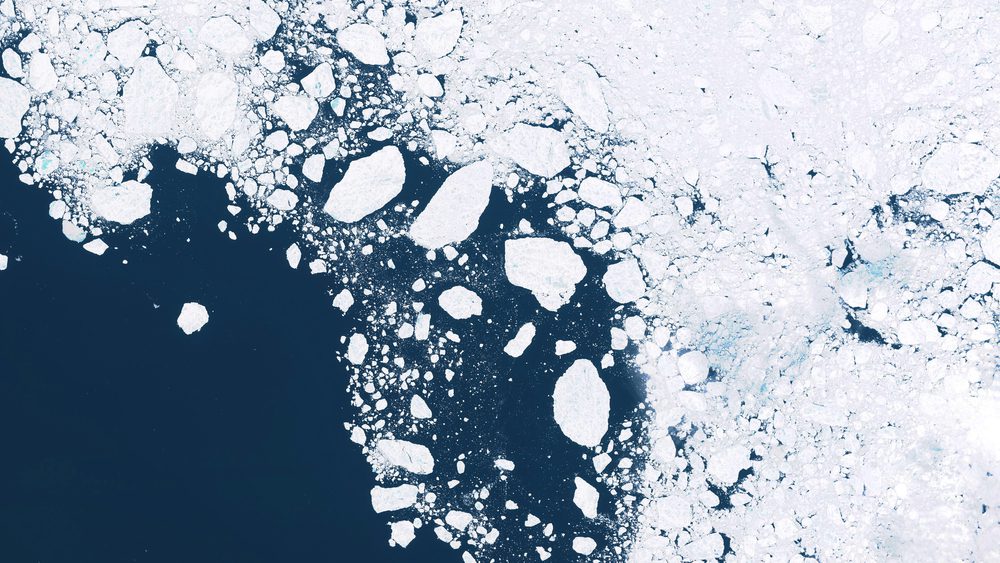Here’s what happens to us when the closest glacier melts:
Climate change and rising sea levels are by far the greatest concerns of our time. Today, we’re going to talk about what will happen to Florida citizens if the closest glacier melts. So far, this is a process that’s likely to happen long after our lifetimes, so from this point of view, we are safe.
It is believed that it takes a very long time for all ice caps to melt, most specifically in West Antarctica. So we can’t help but wonder what will happen to Florida if slowly but surely all the ice caps melt overnight. As we all know, Florida is a flat and low-lying state.
If, by any chance, you are looking for mountains here, then the closest thing you’ll get is the Blue Ridge Mountains, located in northern Georgia (which isn’t close at all). If you’d rather live in a destination where there are both mountains and tropical beaches, then you need to consider Hawaii.

The Two Ice Caps: Greenland and Antarctica
There are two likely scenarios to consider given all the melting of the polar ice caps. One represents what would happen if all the ice sheets in Greenland would melt, and the other represents what would happen to us if all the ice in Antarctica would melt.
At the moment, it’s the Greenland ice sheet that’s melting at a rapid speed and is probably the most troubling one. However, if Antarctica melted, then it would be truly apocalyptic. Taken together, the Antarctic and Greenland ice sheets will contain over 99% of the freshwater ice on Earth.
Out of all the possibilities, the Antarctic one is the behemoth. With ice sheets that span more than 14 million square kilometers, or 5.4 million square miles, it is believed that the surface is as wide as all 48 states and Mexico combined. The Greenland sheets, however, are three times bigger than Texas. Here’s what you need to know about both sheets:
Antarctic Island Sheet:
- size: 14 million square kilometers and 5.4 million square miles;
- volume: 30 million cubic kilometers (7.2 million cubic miles) of ice;
- East Antarctica: massive enough to contain 80% of all the ice on Earth;
- West Antarctica is smaller and more vulnerable.
Greenland Ice Sheet:
- size: 1.7 million square kilometers (656,000 square miles);
- volume: 2.8 cubic kilometers of ice;
- covers 80% of Greenland’s surface;
- Thickness: over 2 km, or 1.2 miles thick.
- Melting of the Greenland Ice Sheet
Let’s say that all the ice in Greenland will melt tomorrow. If that’s the case, then it wouldn’t be the end of Florida. There are high chances for the lowest-lying areas and the Florida Keys to become history, but other than that, the coastal cities would be pretty much protected with Dutch-like dikes.
Florida’s marshes and coastlines would also be completely devastated, and the majority of the state would probably be flooded. Moreover, there wouldn’t be any Everglades, but we’d still have Florida.
As stated in The Guardian, “Greenland’s vast ice sheet is currently undergoing a surge in melting; the amount of ice disappearing in a single day this week is enough to cover the entire state of Florida in two inches of water.”
If you think about it, if all the ice in Greenland melted, the global sea levels would instantly rise by 6 meters, or 20 feet. Truth be told, the world’s ice is unlikely to melt this century, and that’s mainly thanks to West Antarctica.
However, Greenland’s ice sheet could very soon reach the tipping point, after which accelerated melting might become simply inevitable. Also, we would say goodbye to the Everglades, as they only range from 0 to 8 feet (2.4 meters) above sea level.
Moreover, even the Calusa-built shell mound on the Gulf Coast might be at risk. Even if we say it won’t happen in this century, this doesn’t mean that it won’t happen at a very rapid pace. As a matter of fact, the Greenland Ice Sheet is currently melting faster than ever before. In only one day, the ice sheet lost 8.5 billion tons of ice, and it is still losing ice at a rate of one million tons a minute.

What would happen if all the ice melted?
As you can imagine, if all the ice on Earth is gone, the results will be terrifying. The United Kingdom as we know it would be gone, the Caspian Sea would be connected to the other oceans in the world, and the Amazon Basin would become a shallow sea.
Also, there would be an inland sea in Australia, and Florida would be something to teach children about from the history books. The whole Atlantic seaboard would be instantly gone, as would the Gulf Coast.
San Francisco’s hills would be nothing but a cluster of islands, and the Central Valley would become a giant bay or inland sea. The Gulf of California would stretch north past San Diego, or at least what we knew of San Diego.
Moreover, the highest point in Florida, Britton Hill, which is only 345 feet above sea level, couldn’t take the hit. If all the ice on the planet melted, it would automatically push sea levels up by 216 feet, or 65 meters, which means that Florida would become nothing but a smattering of hills, which are now isolated islands.
Let’s put it like this: the mean elevation of Florida is 100 feet, and the sea levels would rise by double the amount of Florida’s elevation.
It’s already happening.
Many parts of Florida are already underwater. The oceans rose by 3 inches in the last 100 years, and if you look at the aerial overview, you can already spot the sunken limestone. The Southern tip of the United States was much wider back in the day.
As far as the measurements can tell, Florida’s coastal elevation lingers around 3–4 feet, and this is one of the main reasons why flooding is incredibly disruptive when it comes to living in Miami, Cape Coral, the Florida Keys, or any other coastal towns.
The Thwaites Glacier
If you haven’t heard, there is a Florida-sized glacier called the Thwaites Glacier somewhere in the western Antarctic that holds enough water to raise all sea levels by 10 feet. The surge would become overwhelming for the majority of cities in the United States. It would force millions of people to migrate to other parts of the country.
Not to mention the economic damage it would cause! In fact, it’s very hard to say, but the majority of people would lose their homes and their entire life savings. On top of that, they wouldn’t be able to live on the ground they loved for such a long time.
In the event that Thwaites Glacier ever collapses, it will open the door for the rest of the West Antarctic ice sheet to immediately slide into the sea, and the image down below can show how big the impact of a sea surge over Florida is.
Trust me, it’s worth digging into the matter. The more you know, the more aware you will become. If you want to read more about climate change, then we’d strongly recommend you read “The Physics of Climate Change” by Lawrence M. Krauss, one of the most respected physicists in the world.
If you enjoyed reading this piece, then you also need to read: Black Holes Are the Scariest Thing in the Universe. 9 Reasons Why.














